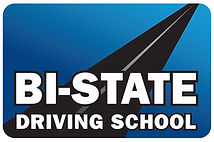
Formally a Sears Driving School with 43 + years of service
Serving both Kansas and Missouri
Office Hours Monday - Friday 10 A.M. to 5 P.M.
Phone : (913) 648-3452 or email info@bistatedrivingschool.com
Cell (913) 609-0139
Office Location: 8600 W 95th St. Ste 1001 Overland Park, KS. 66212
Saturday - Year Round 8 A.M. - Noon Call (913) 648-3452
Gift certificates Available
Hiring Full and Part Time Drivers
We except payments over the phone, day of class or you may pre-register at our office M-F 10 A.M.- 4:30 P.M. Call (913) 648-3452 CASH, DEBIT/ Credit Cards - NO CHECKS
Driving in bad weather can be scary and very dangerous. It’s best to avoid it altogether, but if you happen to find yourself in a storm or a heavy snowfall, these tips will help.
Heavy Rain
-
If you need your windshield wipers on, you also need your headlights on – in rain, fog, sleet, freezing rain, or snow. It will help your visibility and also help other drivers to see you.
-
Double or triple the space you normally leave between you and the next car in wet weather. You’ll need even more space to stop on slick roads.
-
If it’s raining too hard for you to see, try to find a safe place to pull over until the worst of the rain has gone.
-
Don’t use cruise control in wet or slippery conditions. The cruise control may apply more throttle if the drive wheels start to slip.
-
If you see a tornado coming your way, find shelter as fast as you can. If that’s not possible, get out of the car and find a ditch to take cover in, protecting your head and neck.
Snow
-
Brake gently, and when driving on slippery surfaces like ice or snow, use light pressure on the accelerator pedal when starting. If your wheels start to spin, let up on the accelerator until traction returns.
-
If you’ve had to dig your car out of snow or ice, or if you’ve backed into snow, make sure your exhaust tailpipe is clear. If your tailpipe is blocked, you may be breathing carbon monoxide.
-
If driving a white car during snow fall or after the snow has fallen, your car may be camouflaged by the snow, so turn on your headlights and make it easier for other drivers to see you.
-
When starting out in bad weather, test your brakes to see how far it takes you to stop.
-
If you’re stuck in ice or snow, try putting your floor mats under the edge of the tires to give them traction.
Ice and Sleet
-
In winter, keep an ice scraper with a brush in your glove box in case it snows or sleets. Also check that you have wiper fluid/de-icer in your car.
-
Remember that bridges and overpasses can freeze before the roads do.
Ensure that your windshield washer works. You may need it in snow and sleet.







